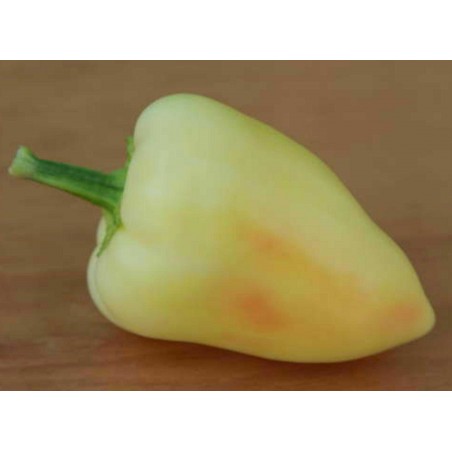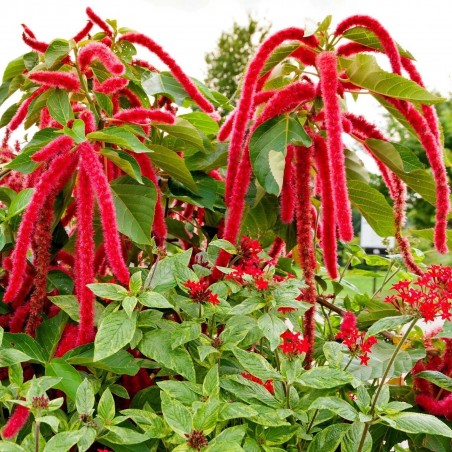
Brazilian Guava Seeds (Psidium guineense)
🍈 Brazilian Guava Seeds (Psidium guineense)
💰 Price: Package of 5 Seeds
🌿 Brazilian Guava (Psidium guineense), also known by many names such as Castilian Guava, Sour Guava, Guinea Guava, and more, is a tropical fruit-bearing plant native to the Americas, with a range extending from Mexico to Argentina and parts of the Caribbean. It has also been introduced and naturalized in regions such as India, where it has found a favorable climate.This shrub or small tree can grow up to 7 meters tall but is typically found as a 1 to 3-meter shrub. It thrives best in sunny sites with moist, fertile soils but is highly adaptable to a variety of conditions, including disturbed or poor soils. However, it does not tolerate salinity or flooded conditions. In Brazil, it is commonly found in coastal areas.
The plant features grayish bark and glandular, pale or reddish-hairy undersides of leaves. The leaves are up to 14 cm long and 8 cm wide, with oval shapes and occasionally toothed edges. It produces fragrant white flowers that grow singly or in small clusters of up to 3, which eventually give way to the guava fruits.
The fruit is round, up to 2.5 cm in diameter, with yellow skin and a yellow outer pulp. The inner pulp is whitish and contains many seeds. Known for its sweet, aromatic, and juicy flavor, it is a favorite for fresh consumption or use in jams, drinks, and desserts.
🌱 Plant Characteristics:
-
🌿 Height: Grows from 1 to 7 meters depending on growing conditions
-
🍇 Fruit: Small, 2.5 cm wide, yellow skin with sweet, juicy pulp
-
🌸 Flowers: White, fragrant, grow singly or in small clusters
-
🍃 Leaves: Oval, up to 14 cm long, glandular with reddish hairs on the underside
-
🌞 Growing Conditions: Thrives in sunny, moist, fertile soils; tolerates a wide range of conditions but not salinity or flooding
-
🌱 Tolerance: Adaptable to disturbed or poor soils, best in tropical climates
🌍 Cultivation & Use:
Brazilian guava is an excellent choice for tropical climates as it can be grown as a fruit-bearing tree or a shrub. It’s also versatile enough to be grown in flower pots, making it an attractive option for home gardens and small spaces. This tree not only provides delicious fruit but also serves as a robust ornamental plant with fragrant flowers.
The fruit is a treat in Persian cuisine, Latin American dishes, and is also used in beverages, jams, and desserts. It’s a relatively low-maintenance plant, needing just sunny conditions and regular moisture to thrive. Ideal for those who want to enjoy tropical fruits without needing large outdoor space.
🌱 Propagation & Growing Tips:
-
🌞 Sunlight: Full sun for optimal growth
-
🌱 Watering: Regular moisture, but avoid waterlogging
-
🌿 Soil: Fertile, well-draining soil
-
🌱 Temperature: Prefers tropical warmth
-
🍇 Fruit Use: Fresh eating, jams, beverages, desserts
-
🌱 Container-Friendly: Suitable for growing in flower pots for those with limited space


Your review appreciation cannot be sent
Report comment
Report sent
Your report cannot be sent
Write your review
Review sent
Your review cannot be sent
🌍 Worldwide Shipping from the EU
We ship worldwide from the European Union using registered air post with signature confirmation on delivery.
📦 Tracking Your Order
Log in to your account and go to Order History > Details to find your tracking number.
You will receive email notifications at every step — please check your spam/junk folder if you don’t see them.
Track your package via:
⚠️ Important Notices
Cash on delivery is not available.
Always provide a valid mobile number with country code when ordering (e.g., +365 456 7686 576).
Do not order to P.O. Boxes or if you cannot be home to sign for the package. We cannot leave parcels with neighbors.
If a package sent to a P.O. Box is lost or undelivered, you lose the right to a refund.
📦 Lost, Returned & Reshipping Packages
For customers in Brazil and Mexico:
We cannot refund packages lost or destroyed by customs.
If your package is returned, we will refund only the product cost — shipping costs are not refundable.
You must pay return postage (€2) and any costs for reshipping.
If a package is returned to us for any reason, you are responsible for paying the return shipping (€2) plus the cost to resend the package.
🚚 Shipment Delivery
Registered shipments require a signature from the recipient.
If your tracking shows the package is still at the origin post office, it means the package is in transit — please contact your local post office directly for updates.
We are not responsible for delivery times and cannot track shipments for you.
📅 Delivery Options & Estimated Times
Delivery Option Processing Time Notes Priority Delivery Ships in 1-7 business days Prioritizes order processing (not guaranteed faster delivery); delays possible during holidays (3-10 days) Secured Delivery Ships in 1-7 business days Available for orders up to €150; refund if lost Standard Delivery Ships in 7-10 business days More economical; delays possible during holidays (7-14 days) Estimated Delivery Time:
Within the EU: 3–20 days
Worldwide: 5–30 days
Example delivery times to the USA:
Delivered in 13, 17, 19, 22, or 27 days.Note: Delivery times depend on your location and the local postal system. COVID-19 may cause additional delays.
💰 Shipping Costs
Shipping and handling fees are calculated automatically during checkout based on the weight of the parcel and the destination country.
⏰ Order Processing Hours
We do not process or ship orders on Saturdays or Sundays.
💳 Payment Options
Bank Transfer (SEPA / IBAN / SWIFT-BIC)
Include your order reference in the payment description (e.g., "SGS-19811702"). Orders without payment within 7 days are automatically cancelled.PayPal
Payments accepted in Euros only. Please select Euros at checkout.Card Payment
For card payments, visit our other site: Exotic Seeds Store
We accept Visa, MasterCard, American Express, CB, Diners Club, Discover, China UnionPay, JCB, and Discover.
⚠️ Transaction Fees
Customers are responsible for any transaction fees. Please provide payment details to help us process your order efficiently.
📢 Final Notes
Before placing your order, please check our website for any special notices, holiday schedules, or specific conditions that may affect your purchase.
Related Products

















